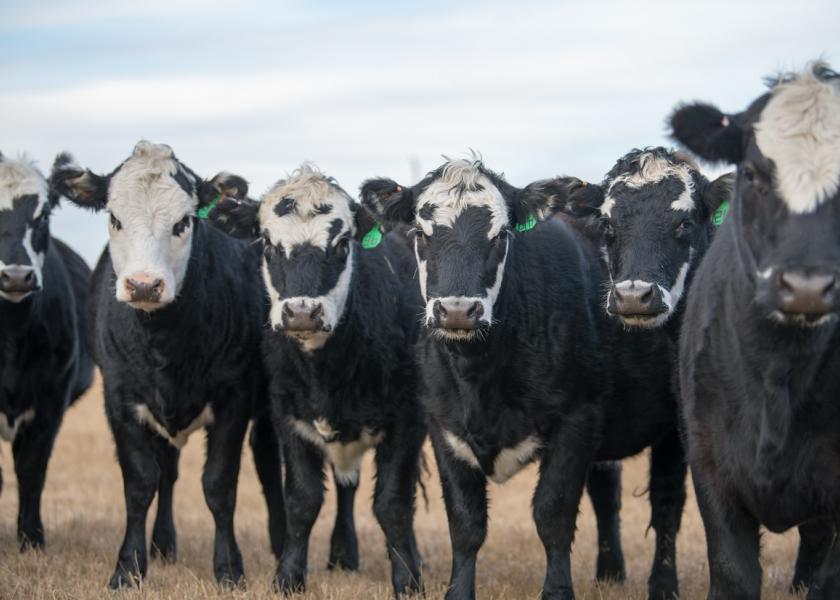Three Options To Reduce Stocking Rates

Current drought conditions across many parts of Nebraska are prompting cattle producers to consider options for reducing stocking rates on rangeland and pasture as we look forward to this spring and summer. There are three main options to reduce stocking rates: supplement/substitute feed, ship cattle to non-drought areas and sell cattle.
Supplement/Substitute Feed
Feeding cattle on pasture can be an option to reduce the amount of forage that cattle are grazing. This option is likely best suited for use on perennial planted pastures where non-native species such as smooth brome, orchard grass, fescue and wheatgrass varieties have been established. These species tend to be more resilient should over grazing occur. Research conducted by the University of Nebraska at the Agricultural Research and Development Center has shown that feeding a mixture of modified wet distillers grains and ground cornstalks in a 30/70 ratio (dry matter basis) replaced grazed grass on approximately a 1:1 basis. In this study, cow-calf pairs were delivered 15.7 lbs of dry matter of the feed mixture daily. Feeding high levels of low-quality forage, (ground cornstalks) with the modified distillers grains is necessary to reduce intake of grass. For more information on this study, please see the 2015 Nebraska Beef Cattle Report, “Supplementing Cow-Calf Pairs Grazing Smooth Bromegrass.”
Drylot feeding of cow-calf pairs, replacement heifers or yearlings is another option to replace grazed forage. Removing cattle from drought stressed rangelands and pasture will help to minimize damage to grass plants, allowing full recovery more quickly when the drought breaks. Several long-term research studies have been conducted on drylot feeding of cow-calf pairs by the University of Nebraska. For more information, see the Dryloting Beef Cows - A Drought Management Strategy web page at beef.unl.edu.
Ship Cattle To Another Location
Often when one part of the country is experiencing drought conditions, there are other parts of the country that are not. Currently many states to the south and east of Nebraska are not experiencing drought conditions at the same level as Nebraska. When considering shipping of cattle to other locations for grazing, carefully take into account all of the factors involved. Risks associated with cattle performance, death loss and biosecurity for breeding cattle returning to the operation should be evaluated.
Sell Cattle
There are several factors that producers should consider when deciding which cattle to retain and which cattle to sell. Here are a few to consider:
- What are the plans and the outlook for the business?
- Which enterprises in the operation have been profitable in the last several years?
- How would selling cattle impact the cost structure of the business?
- Is now a time to make changes to the enterprises that make up the operation?
- Within the herd, what age groups and classes of cattle will likely depreciate the most over the next 2-4 years? Which ones are most likely to appreciate in value?
- What age groups of females retained now would best position the operation to take advantage of anticipated higher calf prices when the drought breaks?
- What are the tax implications for selling cattle due to drought conditions and what opportunities may that provide?
Under drought conditions, selling breeding cattle early usually will result in higher prices being received than waiting until many other producers are marketing cattle also. Strategically thinking through which cattle to keep and which ones to sell can help producers position themselves to make the best of a challenging situation.
Nebraska Extension has Specialists and Educators available to help with questions related to drought feeding and management. In March, Nebraska Extension presented five webinars on drought management. These webinars along with a Drought Management Planning page are available for viewing at the beef.unl.edu website.







